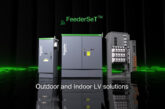
Andy Douglas, MD at Timeguard, asks whether the SRCD protection you install is up to standard.
RCD-protected switched sockets and spurs (SRCDs) should at the very least comply with the latest safety standards for improved end-user safety and long-term reliability. You should also make sure you make the right, safe choice between passive and active versions.
The safety standard to look for is BS7288:2016: Specification for residual current devices with or without overcurrent protection for socket-outlets for household and similar uses.
Don’t just assume that every product marked BS7288 means every device on the market is compliant to the latest standard, as there’s always a lag period while new devices are designed, tooled, and manufactured to the latest standard and old stock is sold through. Any SRCDs you buy now should clearly state BS7288:2016 to be to the latest standard.
Timeguard was the first company to achieve this ‘pass’ with UK approved certification to the new standard at the beginning of 2019 with its Valiance + range of RCD switched sockets and spurs. The standard also calls for much higher levels of testing and performance, to ensure products can withstand years of use and electrical or physical abuse and RF interference.
Also introduced for the first time in the new BS7288:2016 standard was “Type classification”, in-line with general RCDs. Older devices not accredited to this new standard will either be Non RCD Type classified, or be to the basic AC standard. All Timeguard SRCD products achieve rating certification for both Type A (for single phase DC loads up to 6mA including vehicle charging) and Type AC (for AC sinusoidal waves only).
Safe connection
The Valiance+ range of wiring accessories come in both ‘active’ and ‘passive’ versions to suit a multitude of installations such as: airports, hospitals, schools, offices, factories, hotels, homes, etc. Wherever they’re used, it’s important to understand the differences between ‘Active’ and ‘Passive’ versions so you can select the most appropriate product for the application.
For example, an ‘Active’ SRCD would be more suitable for use with products such as hedge trimmers or power tools where the SRCD needs to be reset physically before it can be used again. This is especially important in the event of a power cut as an unexpected restart of the electrical equipment could present a danger to the user.
‘Passive’ versions are chosen for appliances such as freezers and refrigerators where, in the event of a power cut, the SRCD wouldn’t require a physical reset as power is re-supplied to the appliance automatically when the power supply returns to normal.
Why SRCD wiring accessories?
SRCD wiring accessories are specifically designed as life-saving devices to protect people against the risks of electrocution. They detect earth leakage, which could of course be leakage through a human body, and disconnect quickly enough to minimise the harm caused by such shocks.
A miniature circuit breaker (mcb) at the consumer board is an automatically operated electrical switch designed to protect an electrical circuit from overloads and short circuits. Installers naturally have many different ideas on where the extra protection provided by RCD sockets and spurs is needed, and Timeguard’s Valiance+ range of single and twin gang SRCDs in metal clad and white plastic versions cover all these applications, and also retrofit into a 25mm recessed wall box.
Best of all is to make sure the SRCDs you choose are from a trusted source and meet the latest BS7288:2016 safety standards.
Get more details about the Timeguard Valiance+ range by clicking here









